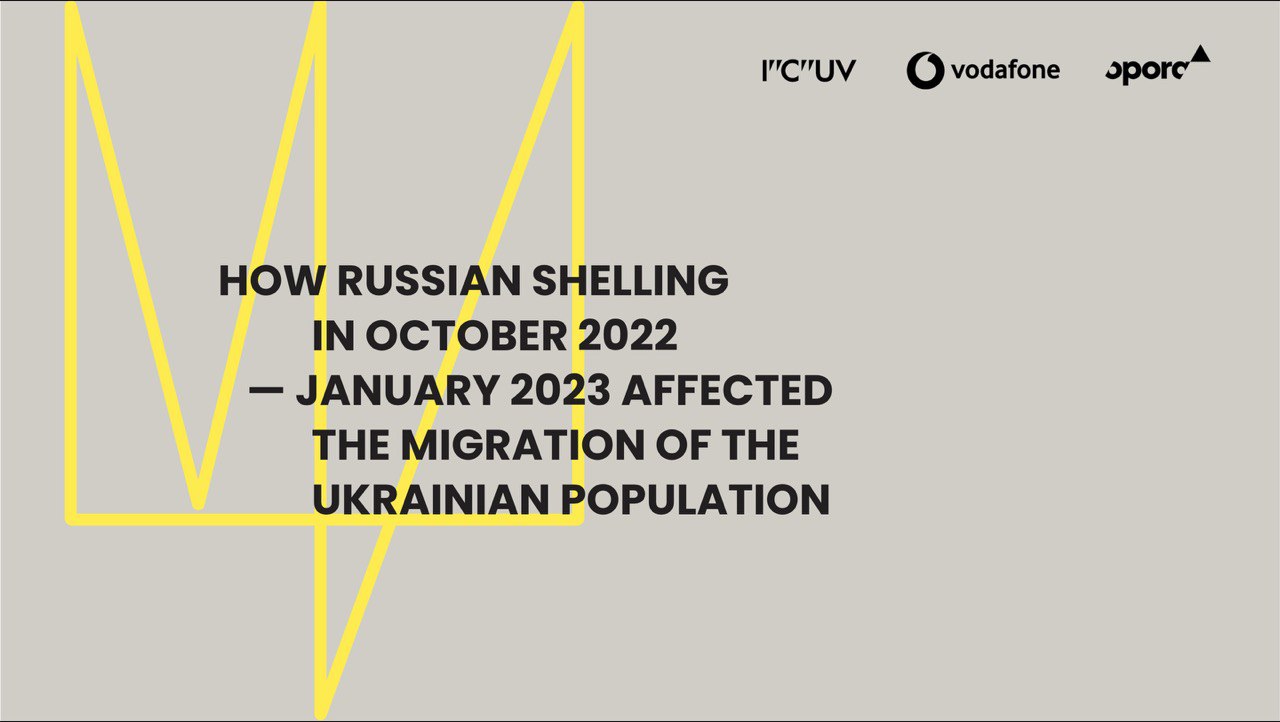Massive shelling of the energy infrastructure prompted Ukrainians to migrate abroad. Indeed, the number of departures from Ukrainian territory in November 2022 increased by 17% compared to October; in December, it rose by 39% overall. These findings are evidenced by the results of a study conducted by the Civil Network OPORA, the International Centre for Ukrainian Victory, and the telecommunications company “Vodafone Ukraine”, which provided the data for the calculations.
According to the research data, after the shelling on November 15 and 23, 2022, the number of departures abroad on the same day, compared to the previous one, increased by over 60%. An even greater avalanche effect was observed on the day following a missile strike. For instance, on November 16 and 17, over 2.7 times more people left the borders of Ukraine than on November 14, and the number of departures on November 24 exceeded that of November 22 by over 3.5 times. Such peaks of mass exodus were not isolated incidents and became quite noticeable from the second half of November 2022 onwards.
At the same time, Russian shelling had an impact on the entire territory of Ukraine. Residents from the eastern or southern parts of our state and regions distant from the active combat zone were leaving the country. In particular, residents of border regions with the EU and Moldova were affected.
“The increased activity of departures abroad from regions distant from the active combat zone can be explained by the fact that missile strikes provoked blackouts and civilian casualties across the entire country” — explains Andriy Savchuk, the author of the research and an analyst with the Civil Network OPORA. “For instance, on October 10, 2022, following an attack, there was a 52% increase in departures from the Zhytomyr region compared to the previous day. Similar migration intensification from Zhytomyr was observed on the day and the day after Russian missile strikes on November 15, 2022, and December 16, 2022. This trend was also observed in the border region with Poland in the Volyn and Lviv regions”.
It should be noted that the analysis of deliberate Russian attacks on civilian infrastructure is in focus of the International Criminal Court (ICC) investigators, alongside the forced deportation of Ukrainian children. On March 5, 2024, the International Criminal Court issued arrest warrants for Russian military commanders suspected of organizing and being involved in the mass shelling of Ukrainian energy infrastructure.
“The depopulation of Ukrainian territories and the mass non-return of our citizens home are goals of the Russian Federation in this war,” — notes Olga Aivazovska, Chair of the Board of the Civil Network OPORA and co-founder of the International Centre for Ukrainian Victory. “According to various methodological assessments, the population before the full-scale invasion ranged from 37 to 43 million people. The full-scale invasion sent demographics into a steep decline. According to various estimates, Ukraine has seen the departure of between 2.3 million to 5.2 million people. We continue to lose people, and the enemy is doing everything to make us fewer. Shelling of the energy infrastructure is another example of Russia's crimes against the civilian population.”
This research has already been submitted to the International Criminal Court through the Prosecutor General's Office. Additionally, it will be forwarded to the International Centre for Prosecution of Aggression against Ukraine (ICPA) as evidence of war crimes and actions by Russians with signs of aggression.
The full research text is available at the following link.
